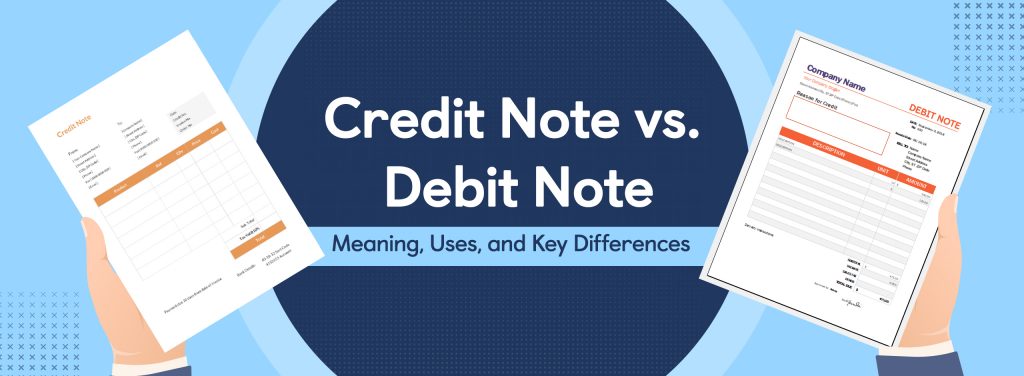In India, standardising and matching invoices under GST helps to strengthen tax enforcement and prevent the circulation of black money. Under GST, all B2B invoices must be reported to the GST general repository when filing a GST return.
The machine populates the data on the buyer or receiver side during the filing of the return of inward supplies or GSTR-2, depending on the invoice information entered.
As a result, it eliminates the risk of fraudulent B2B invoicing. In some cases, however, businesses will be forced to make real changes to an issued invoice. In certain instances, the provider may issue a debit or credit note to amend an invoice.
Understanding the differences between credit and debit notes in company transactions is critical for effective financial management. Both documents play important roles in accounting, although they have distinct functions and are used in various situations.
Check Out Legal & Document Services at OLX
Explain About Credit Notes and Debit Notes
- Debit Note: A debit note, also known as a buyer’s debit note, is a document issued by a consumer to the seller. It essentially serves as a formal notification asking for an adjustment to the amount originally billed.
This modification could be due to a variety of factors, which we will discuss further below. - A debit note is often used in B2B transactions involving credit extensions. In these transactions, a vendor ships products to a buyer before payment is received.
- Debit notes notify the customer that the merchant has debited their account. Although physical objects are exchanged, no money is transferred until an invoice is provided. Instead, debits and credits are recorded in an accounting system to track dispatched inventory and outstanding payments.
- Debit notes differ from invoices in that they are often formatted as letters and may not need immediate payment. This is especially true when the debit note warns the customer of prospective debt responsibilities for amounts that have not yet been legally invoiced.
- Credit Note: In contrast, the seller issues the buyer a credit note, often known as a seller’s credit note. It means that the buyer owes less than the amount listed on the initial invoice. Credit notes, like debit notes, can come from a variety of commercial activities.
- A credit note is not exchanged for money; instead, it is used to offset a previously paid invoice.
- Credit notes, like invoices, are generally regarded as legal documents and forms of record keeping. With the provisions and documentation included in a credit note, you may accurately manage the accounting process for your financial records, accounting for any type of reversal, deletion, or correction.
- They allow the use of credit. If your company or operation wants to offer stowaway or on-credit purchases, credit notes might be useful tracking tools.
Is a debit note similar to an invoice?
Debit notes are comparable to invoices, however, they are not identical. Invoices can be used to document a sale or transaction, and they can be given to the purchaser ahead of time for any type of goods or services.
- Debit notes or debit receipts cannot, and are typically used to document previous refunds or addendums. They are a type of document designed for these specific uses.
- While an invoice cannot replace a debit note, a debit note can be used as an invoice if the provisions are clearly stated.
- This is an uncommon occurrence, and it may only be employed in special situations that are outside the scope of standard business and accounting processes.
Check Out Other Legal & Document Services at OLX
Is there any difference between a Credit Note and Refund?
Many people are confused about the difference between a credit note and a refund, which are often used interchangeably in business.
- Technically, because a credit note is handed to the consumer instead of a refund, it cannot be used in this manner.
- For many professional business owners, the closest parallel is a voucher, which is a customised slip that allows for future credit purchases from a certain location. These can be applied regardless of whether the company is a sole proprietorship, a standalone, or a large-scale chain.
- Some may believe that a credit note is “better” or more strategic than a refund. You may still increase brand presence and exposure while trading goods, maintaining your image and customer service experience.
Difference Between Credit Note and Debit Note
The main distinction between debit and credit notes is their origin and purpose: The buyer issues debit notes, whilst the seller issues credit notes. Purpose: Debit notes seek an increase in the buyer’s payable amount, whilst credit notes acknowledge a drop in the buyer’s liability.
| Particulars | Debit Note | Credit Note |
| Definition | A document issued by the buyer to the seller indicating the return of goods or a request for a reduction in the amount payable. | A document sent by the seller to the buyer that shows a reduction in the amount receivable owing to returned items or an overcharge. |
| Objective | Issued when products are returned or when the buyer has to make a payment adjustment. | Issued when the seller must alter the amount receivable due to refunds or overcharges. |
| Issuer | Buyer | Seller |
| Recipient | Seller | Buyer |
| Tax Liability Under GST | Adjusts the buyer’s tax liability under GST. | Adjusts the Seller’s tax liability under GST. |
| Timing | Issued when products are returned or when the payment amount needs to be adjusted. | Issued when products are returned or when the receivable amount has to be adjusted. |
Check out GST Consultant services on olx
The Use of Credit and Debit Notes in GST
The Goods and Services Tax (GST) is a widely used tax system in India that applies to a variety of transactions.
When dealing with GST-related transactions, both debit and credit notes play an important role in maintaining GST compliance.
- GST: Amount: If a debit note or credit note is provided for a GST-related transaction, the GST amount must be changed correspondingly. This guarantees that the tax liability is appropriately reported.
- Record-Keeping: Debit and credit notes are necessary documents for firms to keep correct documentation for GST reasons. These documents can be extremely useful during GST audits or assessments.
Conclusion
A debit note advises a buyer of the debt they owe, whereas a credit note notifies a buyer of the credit that has been credited to their account. Debit notes raise the buyer’s responsibility, whilst credit notes lessen it.
Understanding the difference between credit notes and debit notes is crucial for accurate financial reporting and efficient business operations.
A debit note is generally issued by the buyer to indicate a return or request an increase in the payable amount, while a credit note is issued by the seller to reflect a reduction in receivables due to returns or overbilling.
Both documents play vital roles in GST compliance and are essential for correcting and adjusting invoices.
Keeping accurate records of these notes ensures transparency, helps during audits, and supports better tax and account management for both parties involved.
Frequently Asked Questions
Do credit and debit notes affect GST returns?
Yes, they adjust the tax liability in the GST returns of both buyer and seller.
Can a debit note be considered an invoice?
Not exactly; while similar, a debit note does not request payment like an invoice.
What is the format of a credit note under GST?
It must include the original invoice reference, GSTIN, taxable value, and tax amount.
Can both notes be issued for the same transaction?
No, only one (credit or debit) is used per correction, depending on the nature of the adjustment.
Are credit and debit notes mandatory under GST?
Yes, they are essential for making adjustments to GST invoices and tax liability.
Also Read:
| Understanding the Tax Benefits for Car Loan |
| Understanding the Impact of GST on Under-Construction Real Estate for Homebuyers |
| Understanding GST Rates on Flat Purchases in 2024 |
























